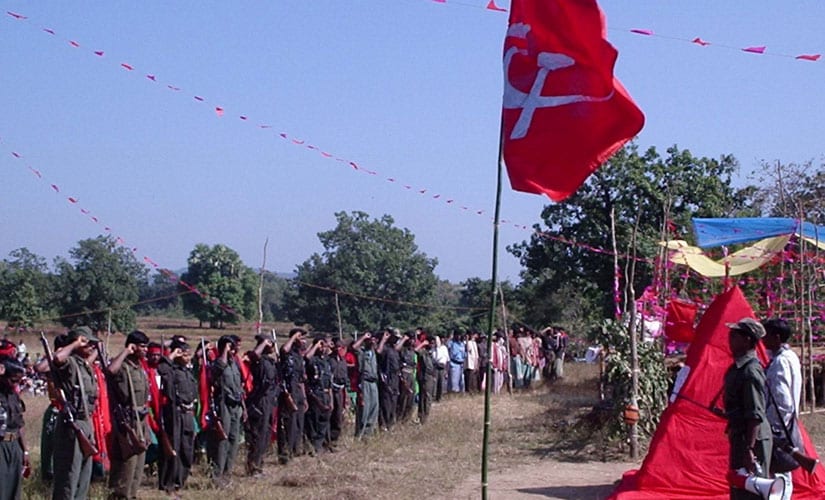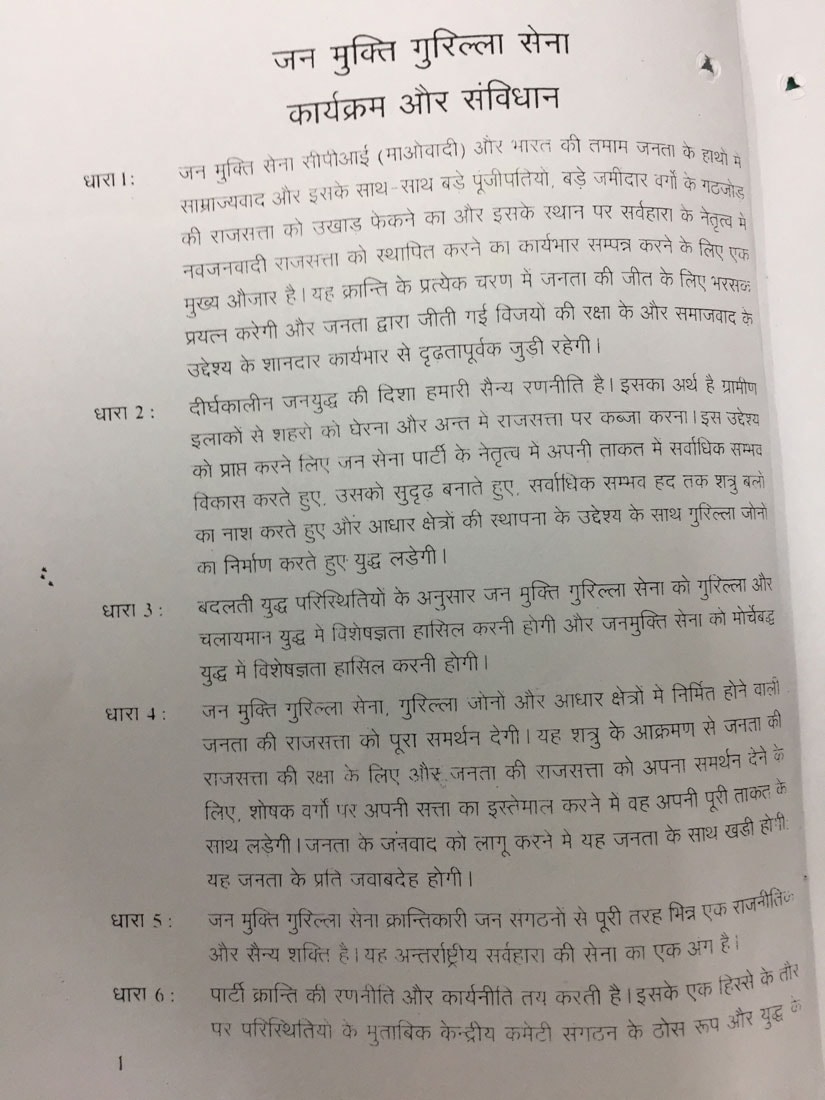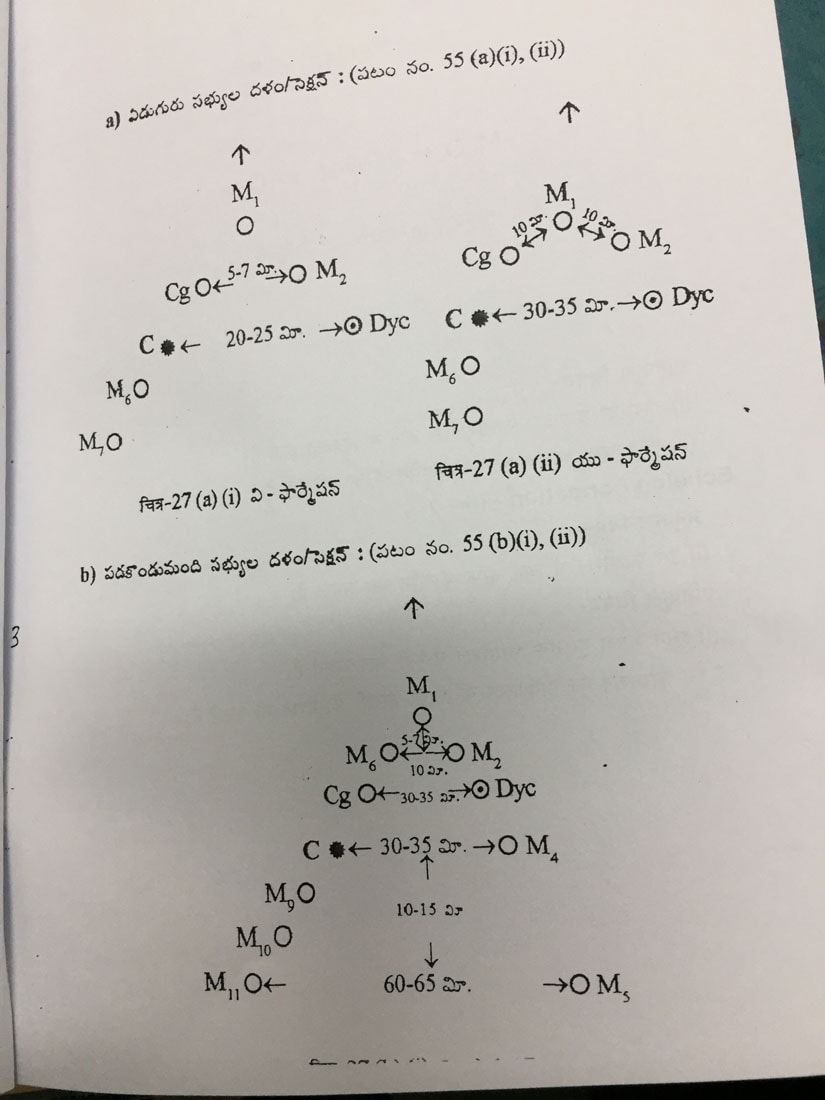Editor’s Note: In April this year, Union Home Ministry removed 44 districts from the list of those affected by Left Wing Extremism (LWE), indicating a shrinking of the area of Maoist influence in the country. This is the result of a multi-pronged strategy that includes an offensive security and sustained development to wean away the locals from Maoist ideology. However, this is not the end of Maoist supremacy in the Red Corridor. The danger is very much lurking in the jungles, beaten, bruised and ready for retaliation. The bigger challenge for the administration is to enter the Maoist stronghold and carry out development right under the nose of the extremists. So, what exactly is the situation on the ground? Debobrat Ghose of Firstpost takes a trip through the Dandakaranya forests in the Maoist-hotbed of Bastar division of Chhattisgarh — one of the most badly affected regions by LWE and site of some of the deadliest attacks on the state by Maoists — to see the changes that have reached some villages, how willing are the villagers in embracing those changes, the immense risk state administration and security forces personnel undertake daily to effect those changes, all in the shadow of the Maoists who are far from finished. Is there any possible nexus between the Naxals in Chhattisgarh and the Liberation Tigers of Tamil Elam (LTTE) operatives? Considering the modus operandi of the Maoists operating in Dandakaranya and their ambush style, this question has come up time and again. What makes the Naxals successful in carrying out an ambush and kill so many jawans year after year, despite the strong presence of security forces? Whether it was the massacre of 76 CRPF personnel at Dantewada in 2010 or brutal killing of Congress leaders at Jhiram Ghati in 2013 — what makes the ultras unleash extreme brutality with surgical precision and manage to escape? This just can’t be the job of local tribals, who may be apt at hunting or small skirmishes between two tribal groups. [caption id=“attachment_4762411” align=“alignleft” width=“380”]  Maoists’ call to strengthen ‘janatana sarkar’ in Dandakaranya region of Bastar. Image procured by Firstpost/Debobrat Ghose[/caption] The answer probably lies in their use of guerrilla warfare tactics, use of landmines, triggering blasts through improvised explosives devices (IEDs) and using children and innocent villagers as human shields. It was at the end of the 90s — when the CPI (Maoist) was yet to be formed — when the People’s War Group (PWG) cadres in secret yet separate interviews given only to a few journalists at an undisclosed location inside the jungles of Dandakaranya had revealed that the Naxal cadres got trained by a few LTTE extremists. It came as a big surprise then and caught the government’s attention as PWG had been setting up its camps inside the deep forests of Bastar in undivided Madhya Pradesh. The operational style, ruthlessness and jungle warfare tactics find a strong resemblance with the LTTE’s way of functioning. Even Operation Green Hunt in 2009 couldn’t halt the killing spree of the Naxals. In 2009 and 2013, the central intelligence agencies had indicated about the ultras joining hands with Tamil Tigers for the training of its military wing – People’s Liberation Guerrilla Army (PLGA). Even the Intelligence Bureau (IB) ahead of the Assembly elections in five states in 2013 had alerted that the Maoists in Chhattisgarh had received training on making human bombs from the LTTE and it could be used to target political leaders during election rallies. The nation is well aware how the top Congress leadership in Chhattisgarh was wiped out when Maoists massacred 31 people at Jhiram Ghati during an election rally on 25 May 2013. [caption id=“attachment_4762371” align=“alignnone” width=“825”]  People’s Liberation Guerrilla Army cadre of CPI (Maoist) participating in TCOC Week programme inside the jungle of Dandakaranya in Bastar. Image procured by Firstpost/Debobrat Ghose[/caption] Organisational structure A. Political organisation The banned political outfit of the Maoists – CPI (Maoist), which came into being in 2004 with the merger of People’s War Group (PWG) and Maoist Communist Centre (MCC), has an organisational structure similar to the Communist Party of India (CPI) and CPI (Marxist). Prior to 2004 and even when Chhattisgarh was a part of undivided Madhya Pradesh (before 2000), Bastar division was controlled by PWG cadre who had shifted their base there after getting pushed out from Andhra Pradesh whereas the Surguja belt in north Chhattisgarh bordering Bihar was under MCC’s control. Now, the Maoists in Bastar belong to CPI (Maoist). It has its central committee and politburo. The entire organisation is divided into committees like state committee, zonal committee, district committees and squad area committees. The senior leaders of these committees are also a part of the central committee. Muppalla Laxmana Rao aka Ganapathi, 72, is the general secretary of the CPI (Maoist). B. Military organisation The other section that deals with the armed cadre is the Central Military Commission (CMC) at the central level, which is responsible for directing guerrilla activity, chalking strategy, buying and supply of arms. There are sub-committees under it like Special Area Military Committee and Zonal Military Committee. This is further divided into bodies with area-specific requirements. • People’s Liberation Guerilla Army It’s the military component of the CPI (Maoist), which is involved in military training, guerrilla squad, protection of Maoist cadre and platoons and launch attacks. It was PLGA that was involved in the massacre of 76 CRPF personnel in Dantewada, Congress leaders in Jhiram Ghati and other big attacks. The liberated zone of the Naxals in the red corridor is controlled by PLGA. The basic military unit of the Maoists in Bastar is dalam (squad) comprising 15 to 40 members, which is again area specific and headed by commanders. Different dalams are often grouped for carrying larger operations as a ‘company’. In Dandakaranya, ‘battalion-1’ is the topmost military body headed by its commander Madvi Hidma.  “Military organisation of Maoists in Dandakaranya comprises Local Organisation Scout (LOS), Local Guerrilla Scout (LGS), platoon, company and battalion,” a surrendered Maoist from Bijapur told Firstpost on condition of anonymity. While the role of LOS is to establish public contact with villagers by moving around villages, collecting money (protection fee/levy), rice and other edible items from them; the LGS — next upper level — is a part of janatana sarkar (people’s government). The next higher level is ‘platoon’ which lays booby traps, monitors the movement of police and security forces and carries out firing when the need arises during an ambush. Above it is the ‘company’ that is responsible for carrying out military work on the ground. ‘Battalion’ is the topmost body, with a leader known as commander. The sole purpose of the battalion is an armed struggle against the establishment. While the surrendered Maoist revealed about two companies operating in Bastar division, the Inspector General of Bastar division, Chhattisgarh Police, Vivekananda said, “There’s only one battalion at present headed by its commander Hidma.” • Jan Militia: These are the supporters and sympathisers of Maoists living in villages and often remain unidentified. The members of Jan Militia act as ‘eyes and ears’ for Maoist cadres and are responsible for gathering intelligence, monitoring movements of security force personnel, spreading of LWE ideology, indoctrination of tribal villagers, especially youths and striking when the need arises. They are often considered as the backbone of CPI (Maoist). • Dandakaranya Special Zonal Committee (DKSZC): This is purportedly as powerful as a state committee. It is the Maoist stronghold in the state. It’s led by high profile Maoist leaders who are also members of the central committee. The command area of DKSZC comprises Bastar and a part of Gadchiroli. • Liberated zone and janatana sarkar A ’liberated zone’ is a particular region in an LWE-affected district where the Maoists rule the roost. Police and central forces haven’t been able to penetrate this zone. According to police and CRPF sources, the Abujhmarh belt in Narayanpur district remains impenetrable for them. The other areas of the ’liberated zone’ are in Sukma and Bijapur districts. The CPI (Maoist) has formed janatana sarkar in these zones, which is a ‘state within a state’. Entry into a village by an outsider or leaving the village by a villager in such regions is not possible without the permission of the Maoist cadre. Violate it and one may face severe consequences, which usually amounts to death — such are the laws of janatana sarkar. [caption id=“attachment_4762291” align=“alignnone” width=“825”]  A page from programme and constitution of People’s Liberation Guerrilla Army in Dandakaranya. Image procured by Firstpost/Debobrat Ghose[/caption] Frontal organisations CPI (Maoist) has its frontal organisations related to tribal villagers, farmers, labourers and tribal workers in the mines like Dandakaranya Adivasi Kisan Mazdoor Sangh, Dandakaranya Khadaan Mazdoor Sangh, Krantikari Kisan Samiti, Krantikari Mahila Samiti, etc. These bodies are functional across seven Maoist-infested districts in Bastar division and disseminate party’s policies among tribals. The party also has its cultural wing that uses songs, dance, skits etc in villages to spread its ideology and disseminate messages. The aim is to bring Nav Janvadi Kranti (neo people’s revolution). However, this has been destroying the original cultural fabric of the tribals. Many villagers alleged that Maoists have banned many age-old tribal practices like ghotul etc. According to Outlook Traveller, “The ghotul is a social institution in Bastar, its forms and extent varying from community to community. Strictly speaking, the ghotul is a village dormitory, a youth club, a bachelor’s home, a house for unmarried girls or a common dormitory for both young men and women. Murias are its greatest adherents.” Some of the members of the frontal organisations are also a part of the Jan Militia. [caption id=“attachment_4762341” align=“alignnone” width=“825”]  Naxal armed cadre PLGA’s document showing strategic positioning of foot soldiers during an ambush. Image procured by Firstpost/Debobrat Ghose[/caption] Military training and ambush strategy The foot soldiers and cadres in the PLGA comprising both men and women have to undergo rigorous training — from physical combat to laying an ambush in various Maoist camps spread across Bastar, especially in the ’liberated zone’. Documents of the Maoists accessed by Firstpost show how the ultras train their cadre on laying booby traps, launch ambushes and guerrilla warfare. A document on ambush strategy appears to be a page from an organic chemistry book at the first glance. It has been coded as ‘C’, ‘H’, ‘O’, ‘M’, etc. (not carbon, hydrogen or oxygen) to explain the formation of foot soldiers on a battleground and how to launch an attack, counter security forces and trap the ‘enemy’ (police and CRPF as per Naxals) in an ambush. Another document — a hand sketch of an Under Barrel Grenade Launcher (UBGL) — explains the functioning and use of the weapon. “Besides looting arms and ammunition, the Maoists make improvised weapons at their local factories deep inside the jungles. The documents recovered by us from Maoists camps revealed many secrets from training to weapon manufacturing,” DM Awasthi, chief of Anti-Naxal Operations in Chhattisgarh told Firstpost. According to intelligence sources, the style of operation, use of landmines, making of IEDs, guerrilla warfare tactics, use of excessive brutality against those who are opposed to Maoists like police, security force personnel and even villagers, who they brand as mukhbir (police informers) and implanting IEDs inside the bodies of slain CRPF jawans — all indicate towards a past nexus with LTTE and training imparted by Tamil Tigers at some point of time. It was done on a mutual-benefit basis. The LTTE cadre provided training to Naxals inside Dandakaranya forests, as they got a safe hideout and logistic support after being pushed out by Sri Lankan and Indian governments. “The Maoists got their training in IEDs, landmines, manufacturing of improvised devices and jungle warfare from the members of the LTTE cadres when the latter was on the run and took shelter in the jungles of Bastar. Naxals had given them shelter on the condition that they would be trained by the LTTE men,” counter-terrorism analyst Anil Kamboj said. Jan adalat: Naxal court of law Maoists hold jan adalat in tribal villages to settle disputes among villagers. They give exemplary punishments using extreme brutality to those found ‘guilty’ by them especially to those whom they identify as ‘police informers’. It’s also a way to settle scores and create fear-psychosis among villagers to subjugate the latter. In recent times, cases of jan adalats have declined but couldn’t be stopped completely. Alarming dates Both the government and security forces consider a couple of dates being observed by the Maoists in Chhattisgarh as ‘alarming’ and safety alerts are issued during those periods. The CPI (Maoist) gives a call for ‘bandhs’, block movement of public and private transport, halt rail movements and launch surprise attacks on police and administration. The objective is total blockade of economic activities and destabilising the government’s functioning. PLGA Week (2 to 8 December): Recruitment drive of Maoists. TCOC Week (15-21 April): Tactical Counter-Offensive Campaign (TCOC) is observed as ‘Black days’. In fact, the TCOC period begins from 10 March onwards and continues till June, when Maoists launch big and violent ambushes. Security forces are on their maximum vigil as they anticipate audacious attacks. Jan Pituri Saptah (4-12 June): Coincides with TCOC period. During the week, Maoists pay condolences to cadre killed in police encounters and also launch attacks as revenge. They cause road and rail blockade, and roads are damaged as a mark of protest, without caring for the public inconvenience. Shaheed or Martyrs’ Week (28 July-3 August): Maoists damage public properties and block public transport during the period. In 2008-09, Maoists blew up power transmission line from Korba to Narayanpur, which caused a complete blackout in Bastar for a fortnight. Republic Day and Independence Day: Wherever possible, Maoists don’t allow hoisting of the tricolour in village schools on 26 January and 15 August. They observe it as ‘Black Day’ and use black flags and badges to mark protest. The trust deficit against the government agencies, amongst the tribals — which is due to decades of negligence and apathy towards the population and police excesses in the name of hunting down Maoists — have created a fertile ground for CPI (Maoist) to use its architecture to spread its ideology of LWE across Dandakaranya and radicalise young minds to build future cadre. In many cases, it’s a Hobson’s choice for the poor innocent tribals — either support Maoists or support the police. “But in either case, we’ve to die. If we support police and inform them about Naxals, the latter will kill us. And, when we’re compelled to support or accept the janatana sarkar, we’re branded as ‘Maoists’ by the establishment. There’s no one to save us,” a few tribals in an interior village of Sukma district complained. This scenario is almost similar in the interior-most villages in Maoist-affected districts in Bastar. Tribal activist Soni Sori said, “On one hand, Adivasis have to face the ire of Maoists, who either kill them or force them out of the village, and on the other hand, they are harassed by the police. They have nowhere to go.” Next up: My next destination is Chitaloor village by the banks of river Indravati in Bastar district. I had first heard about this village while having tea by a roadside eatery on way from Jagdalpur to Dantewada district and about a unique initiative taken by the villagers of Chitaloor, as a step towards development. Also Read **Narendra Modi govt’s Bastar 'development offensive' showing results, tribals getting first taste of freedom** **Bastar development offensive: Once a Maoist den cut off from mainstream, Palnar village is now a digital hub** Bastar development offensive: Geedam lives on to tell another tale, this time of an education city and not of Maoist violence Bastar development offensive: Healthcare, education thrive as tech-savvy Dantewada collector seeks to counter Maoist doctrine **Bastar development offensive: Maoist ideology of bringing change through revolution a lie, says former cadre**
Maoists show trademark LTTE style of operations while using guerrilla warfare tactics, using landmines, triggering blasts through improvised explosives devices and using children and innocent villagers as human shields.
Advertisement
End of Article


)

)
)
)
)
)
)
)
)



